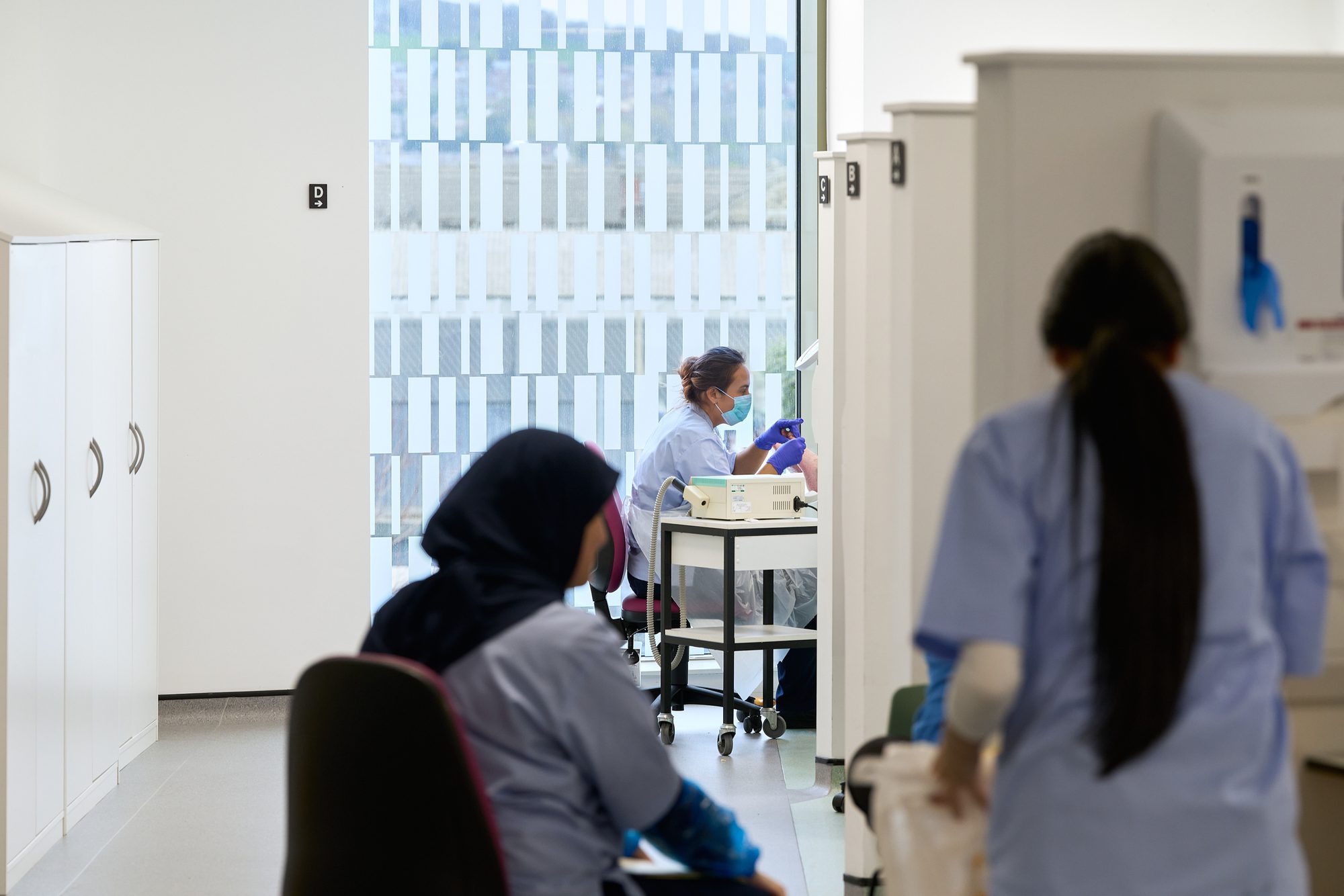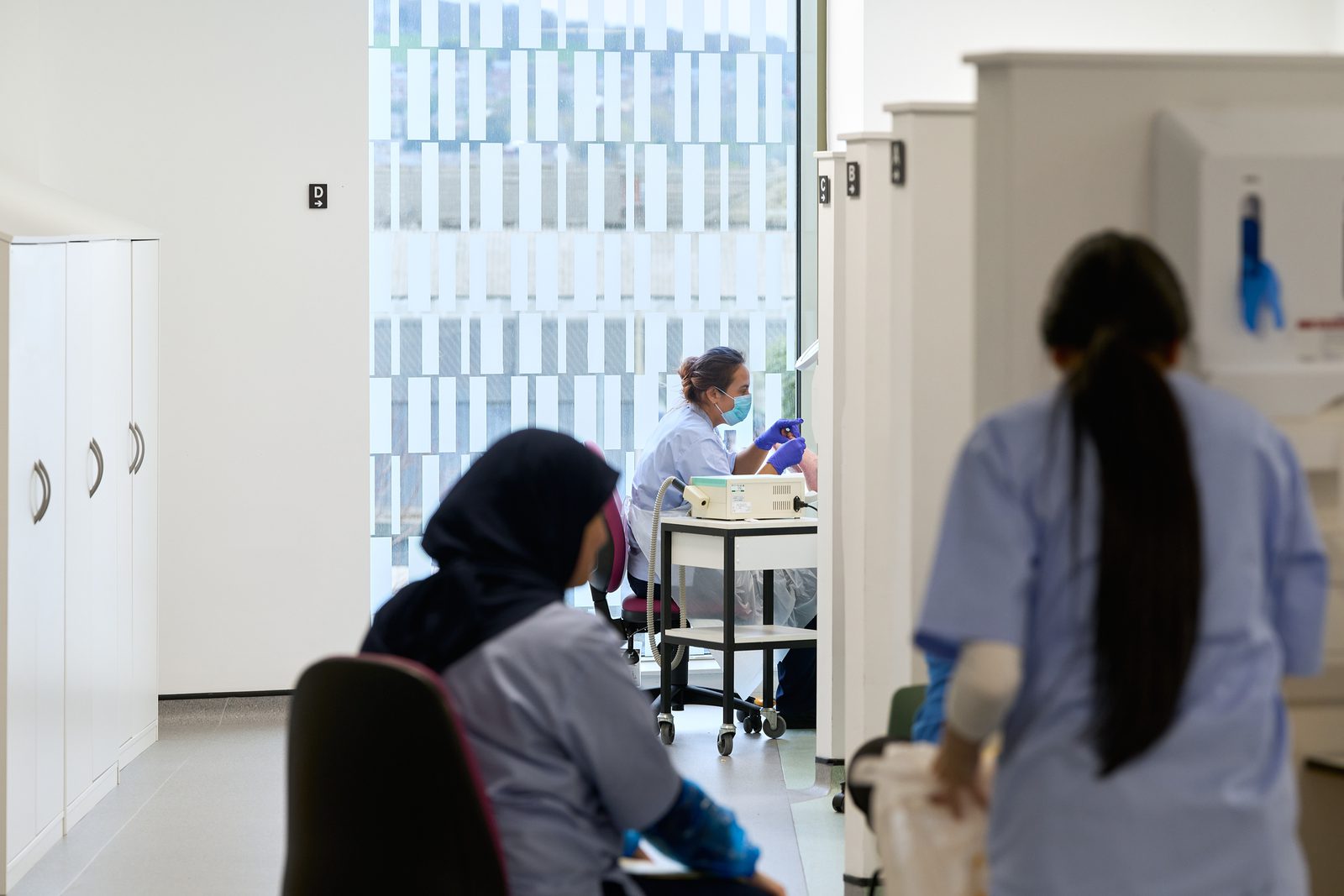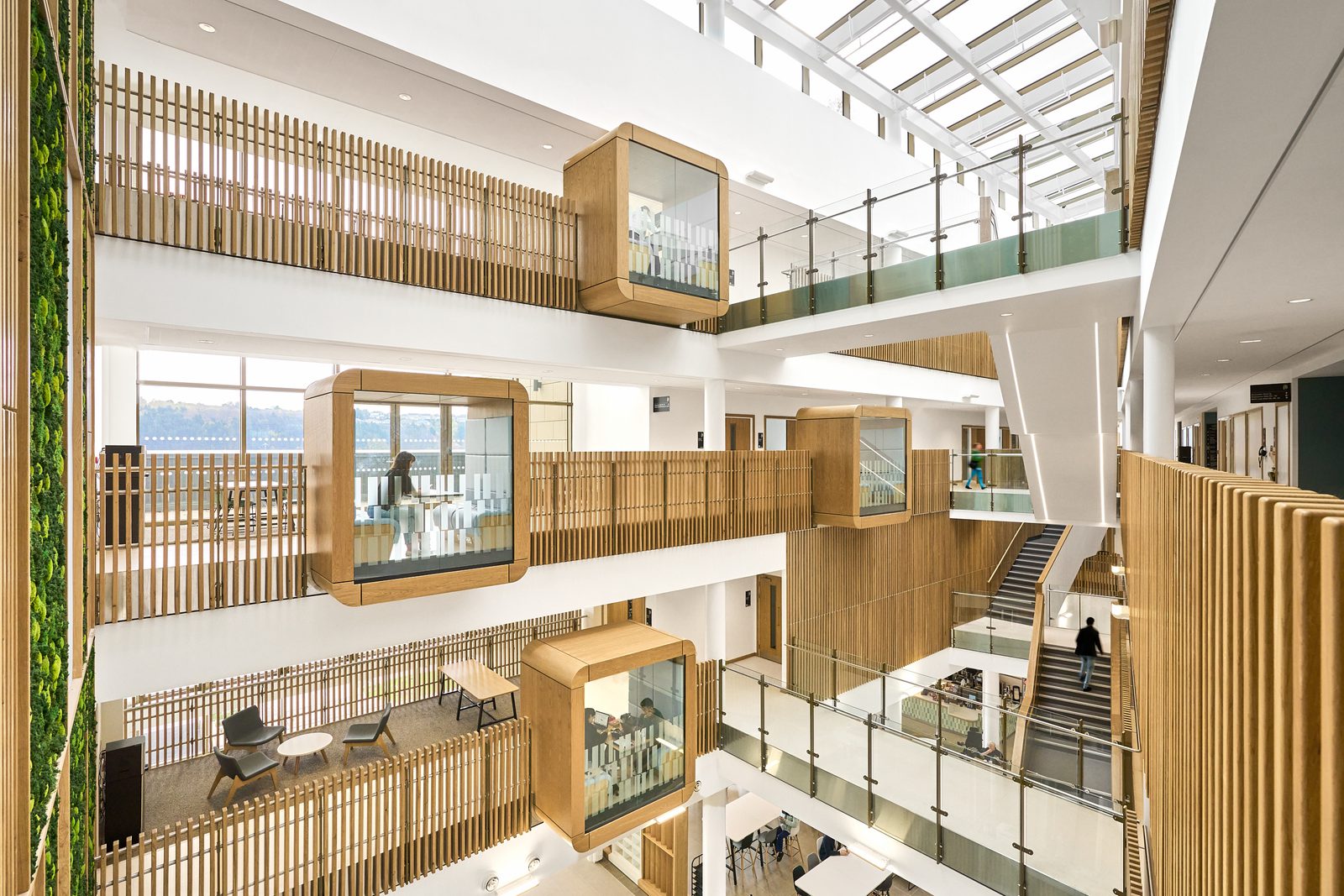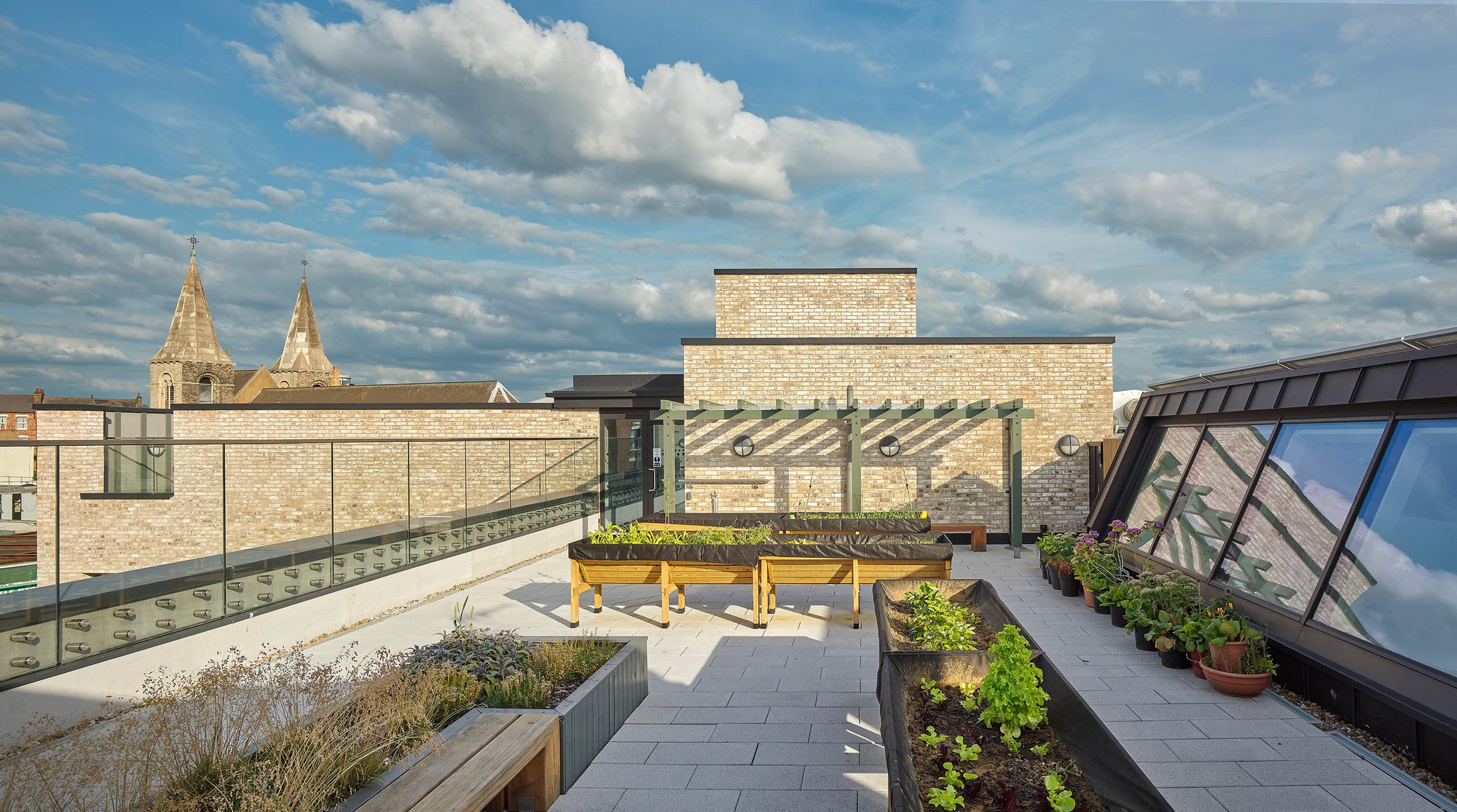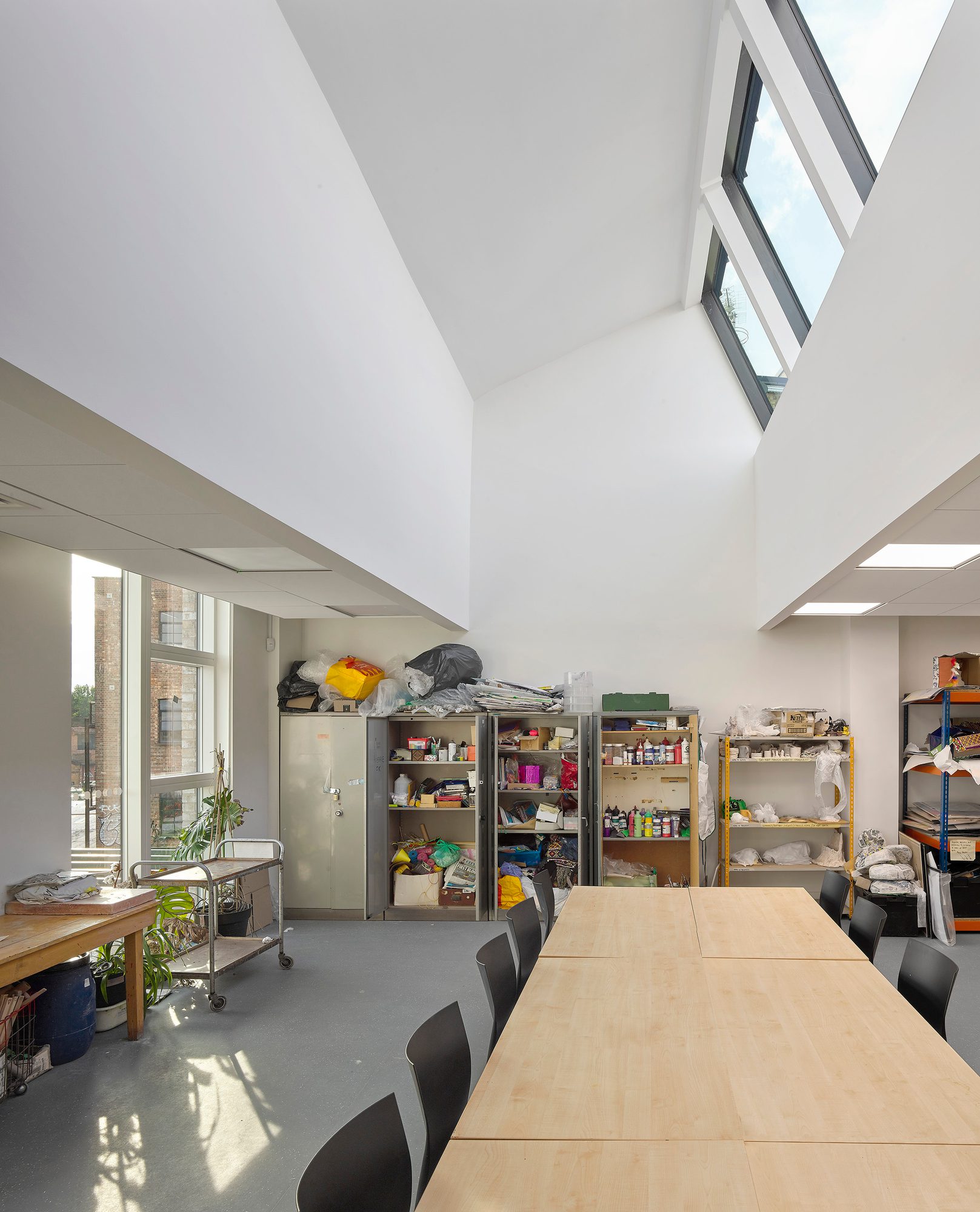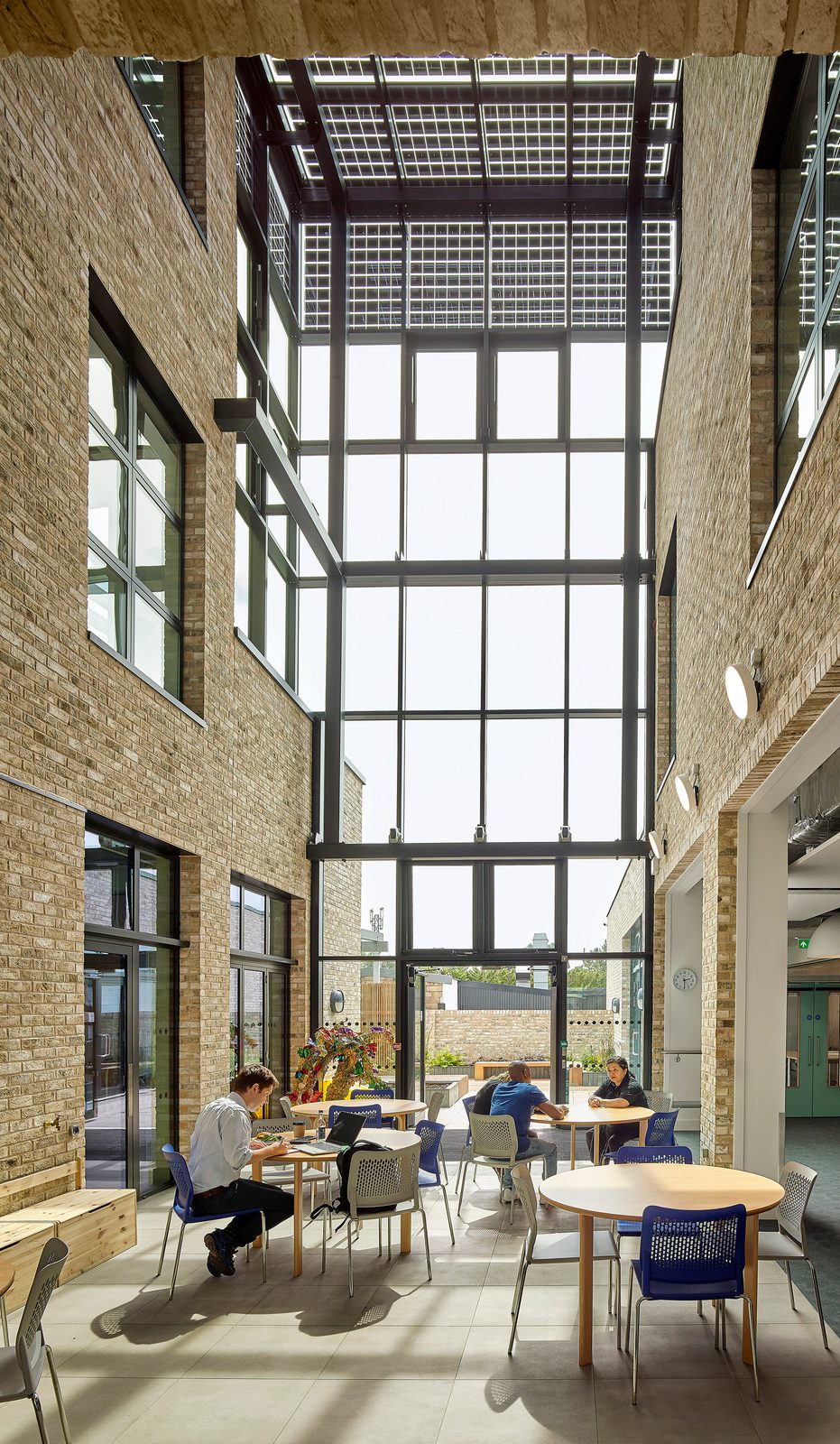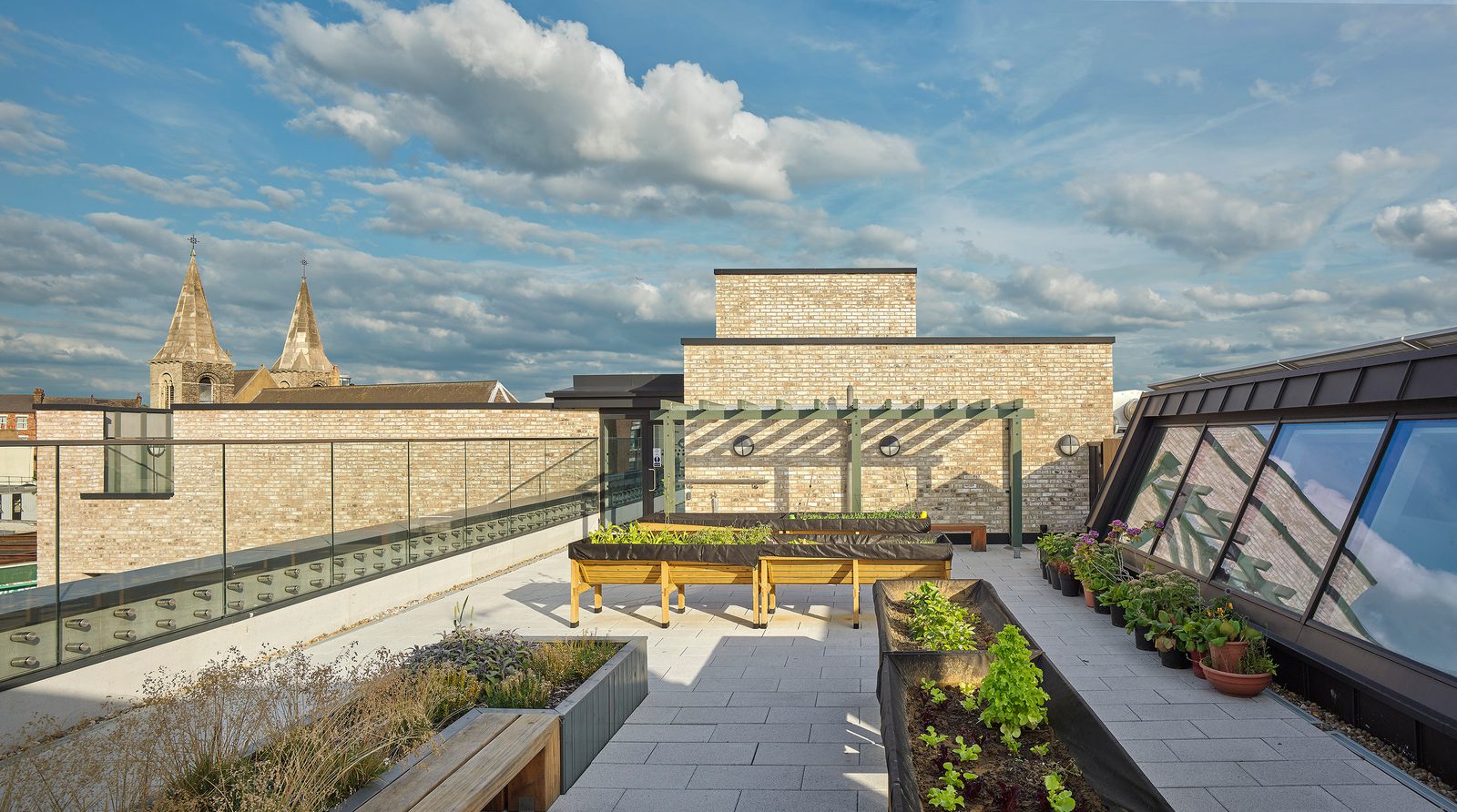
Reimagining healthcare: Patient-focused design and community-based care
by Victoria Shepherdson
Associate Director, Architecture
Earlier this autumn, I had the privilege of speaking at the 2025 IHEEM Healthcare Estates Conference in Manchester, where I explored how thoughtful, patient-focused design and community-based care can transform the way we deliver healthcare.
After more than 25 years designing healthcare buildings, I’ve seen first-hand how the environments we create profoundly shape both patient experience and clinical outcomes.
Today, the sector faces enormous pressures, from workforce shortages and rising demand to outdated estates that can no longer support evolving models of care. But I believe the solutions lie not just in more technology or larger hospitals, but in reimagining healthcare around people and place.
From hospital-centred to community-based care
In 2021, over 7.8 million outpatient appointments were missed, a huge drain on NHS resources, but also a symptom of something deeper. For many patients, hospitals feel complex and hard to navigate. Rural and deprived communities often face the longest waits, while overstretched acute sites struggle to meet growing demand.
We need to rethink where and how care is delivered, shifting from reactive, treatment-focused systems to proactive, preventive and community-based models. Moving diagnostics and outpatient services closer to home can ease pressure on acute hospitals, deliver earlier diagnoses, and build trust between communities and the health system. But for this to succeed, design must lead the way, creating environments that feel accessible and familiar.
Public-private partnerships driving positive change
At AHR, we’ve seen how collaboration between the NHS, local authorities and education providers can unlock innovative models of community care. A leading example is the joint venture between Calderdale and Huddersfield NHS Foundation Trust and the University of Huddersfield, the first of its kind in the UK.
Together, we’ve helped shape a new typology for healthcare on the National Health Innovation Campus (NHIC), where academic spaces sit alongside community diagnostic and wellbeing facilities. Supported by the West Yorkshire Mayor and Combined Authority, this pioneering initiative places prevention, education and patient experience at its heart.
Located in an area with one of the lowest life expectancies in the UK, the NHIC addresses real local need. It integrates the Trust’s second Community Diagnostic Centre (CDC) and a Health and Wellbeing Innovation Centre, creating a one-stop hub that brings clinical, academic and community services together under one roof.
 The National Health Innovation Campus, Huddersfield
The National Health Innovation Campus, HuddersfieldDesign that supports wellbeing and recovery
Our designs respond not just to clinical requirements but to emotional needs, ensuring environments heal, inspire and connect.
The Daphne Steele Building, the first university building in the UK designed to achieve WELL Platinum certification, is a testament to this approach. Every aspect of the building, from lighting and materials to the abundance of greenery, supports wellbeing. Natural light floods the interiors, while biophilic elements, like green walls, planting and timber finishes, create calm and restorative spaces.
Next door, the Emily Siddon Building extends this philosophy, harmoniously bridging health, education, innovation, and community. The building will be a focal point where health professionals, students, academics and the community come together within the wider context of the NHIC.
Both buildings embody what it means to design for people, not just for purpose, spaces that shape the next generation of healthcare professionals while offering meaningful benefit to the wider community.
 The Emily Siddon Building, Huddersfield
The Emily Siddon Building, HuddersfieldEmpowering communities through design
The success of the NHIC builds on earlier community projects, such as the Greenwood Centre for Independent Living in Camden, another AHR-designed facility that redefines what inclusive health environments can be. Run by disabled people, for disabled people, the centre offers an empowering model of care that gives individuals choice and independence.
Even in its central London location, the Greenwood Centre provides an oasis of calm, filled with natural light, outdoor terraces and places for connection. The project went on to win the European Healthcare Design Award for Health and Wellness, and remains a powerful example of how design can restore dignity and community pride.
Designing for people, staff, and the future
When we talk about patient-focused design, we are also talking about staff wellbeing. Healthy buildings lead to healthier teams, reducing fatigue, improving morale and ultimately leading to better patient care. Quiet rooms, daylight-filled break areas, ergonomic layouts and access to nature all contribute to safer, more compassionate environments.
We also design with flexibility in mind. Healthcare is evolving rapidly, from digital diagnostics to AI-supported care, and our buildings must be future-ready. Adaptable layouts, multipurpose rooms and integrated education suites enable services to evolve without major disruption, ensuring longevity and resilience.
A new way forward
Reimagining healthcare is not about replacing hospitals, it’s about complementing them with connected community spaces that bring care closer to people’s lives. It’s about creating environments that foster wellbeing, encourage prevention and build trust between patients and providers.
By combining thoughtful, empathetic design with innovation and collaboration, we can help shape a healthcare system that works — for everyone.
Contact us to discover how we can help you shape healthcare spaces that enhance patient wellbeing, support staff and adapt to the future of care.
Frequently asked questions
We have almost two centuries of experience designing places that improve lives — including hospitals, community diagnostic centres, wellbeing hubs, primary care facilities and research environments. Our healthcare portfolio spans both acute and community settings, supporting the NHS and private providers nationwide.
We work closely with NHS Trusts, Integrated Care Boards (ICBs) and local authorities to reimagine estates through feasibility studies, masterplans, and full design delivery. From repurposing underused sites to creating new community diagnostic centres, our approach helps Trusts improve efficiency, sustainability, and patient experience.
We offer a full multidisciplinary service, including architecture, interior design, landscape design, building consultancy, masterplanning, and heritage and conservation. Our teams collaborate seamlessly across disciplines to deliver integrated, future-ready healthcare estates.
Our approach is people-first. We design from the patient’s perspective — prioritising accessibility, wellbeing and connection. Each project is rooted in research and guided by evidence-based design, sustainability standards like WELL Platinum and BREEAM Excellent, and a deep understanding of how space impacts care and recovery.
From small community clinics to large-scale hospitals and education-health campuses, our experience covers the full spectrum of healthcare estates. We deliver new-build, refurbishment, and adaptive reuse schemes that integrate health, education, and innovation.
Sustainability is embedded in everything we do. We design energy-efficient, low-carbon and inclusive environments that enhance wellbeing and social value. Our goal is always to leave the world — and the communities we work in — better than we found it.
Posted on:
Oct 24th 2025
Topics:
Share on
Related Projects

Cross Hands Community Health and Wellbeing Centre
With an emphasis on promoting better health in the community, the project will replace the existing doctor’s surgery as part of the region’s welcome modernisation programme.

Abbey Area Community Hub
An accessible, welcoming focal point for local people, the hub combines community and health services into one cohesive building within a new park setting

Shrewsbury and Telford Hospital NHS Trust (SaTH)
This major hospital project, known as the ‘Hospitals Transformation Programme’ (HTP) will improve improve care for local people.
Related News

Transforming healthcare education by putting the patient journey at the heart of its design
Project News
19 Oct 25

Delivering patient-centred healthcare that supports recovery, communities and net zero goals
Thought Leadership
17 Oct 25

The new Women and Children's Building becomes first in England approved under NHS Net Zero Building Standard
Project News
1 Oct 25
